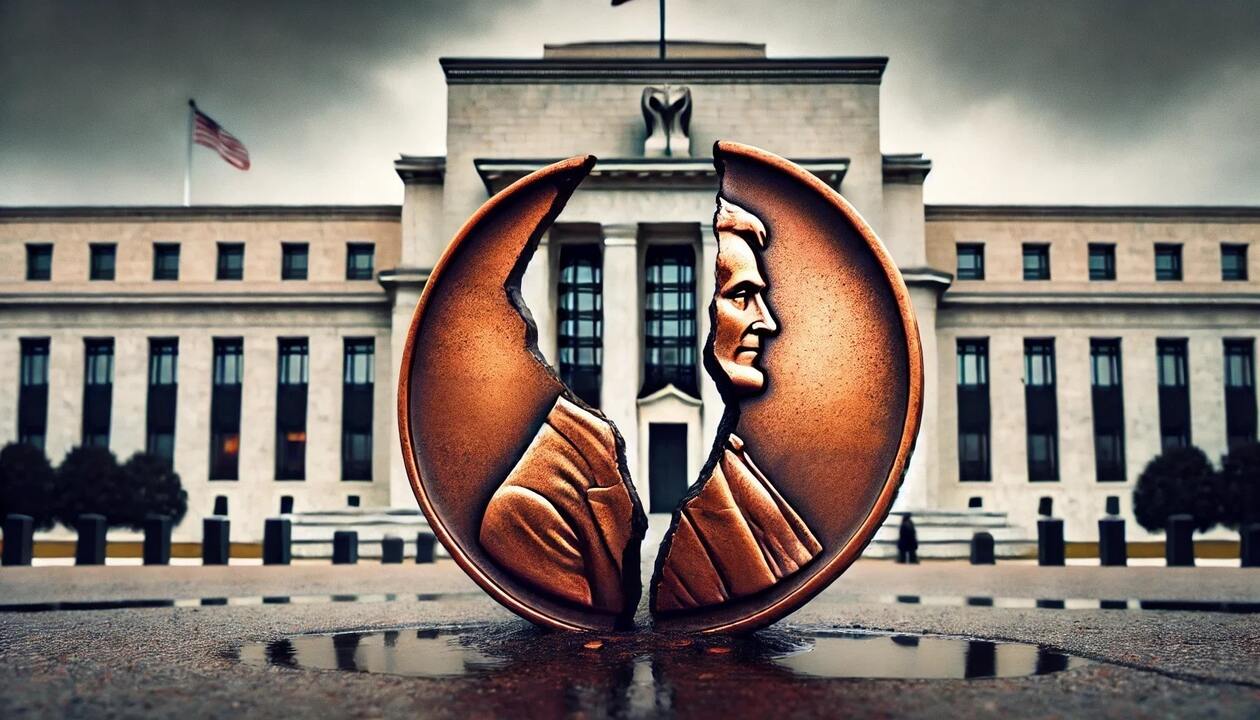(Money Metals News Service) In the latest episode of the Money Metals Midweek Memo, host Mike Maharrey dives deep into the Federal Reserve’s ever-changing stance on inflation, the reality behind rising consumer prices, and a seemingly unrelated yet important development—the end of the U.S. penny.
Through sharp analysis and historical comparisons, Maharrey explains why the government’s monetary policy continues to erode the value of the dollar while reinforcing the importance of holding physical gold and silver.
Inflation: The “Transitory” Illusion
Maharrey opens with a reference to Monty Python’s famous Dead Parrot sketch, drawing a humorous but telling analogy between the Federal Reserve’s handling of inflation and the pet shop owner’s refusal to admit the bird was dead.
He points out how, back in 2022, Fed Chair Jerome Powell and other officials insisted that inflation was “transitory.” However, as consumer prices surged beyond expectations, the Fed was forced to change its narrative. By mid-2023, officials hinted that inflation had been “beaten,” and markets reacted with optimism.
Yet, Maharrey reminds listeners that he repeatedly warned against this overly optimistic view, arguing that the Fed never did enough to fully suppress inflation. As recent CPI (Consumer Price Index) data now shows, inflation remains persistently high, proving the so-called victory over rising prices was, in itself, transitory.
Breaking Down the CPI: Rising Prices Are Hard to Ignore
Reviewing the latest inflation data, Maharrey highlights several key figures from the December 2024 and January 2025 CPI reports:
- Annual inflation rate (January 2025): 3.0%
- December 2024 CPI: 2.9%
- Monthly inflation spike (January 2025): 0.5% increase
- December monthly increase: 0.4%
The steady rise in CPI over the past few months challenges the notion that inflation is under control. Notably, core CPI (which excludes volatile food and energy prices) surged 0.4% in January, pushing the annual core CPI to 3.3%—a level that has remained stubbornly high since mid-2024.
Despite these figures, Maharrey emphasizes that the official CPI underreports true inflation. If the government used the methodology from the 1970s, current inflation would be closer to 6% or higher, meaning the cost of living is rising much faster than reported.
The Fed’s Dilemma: Raise Rates or Cut Them?
With inflation running hotter than expected, the Federal Reserve faces a difficult choice:
- Raise interest rates further to fight inflation.
- Cut rates to ease pressure on the debt-laden economy.
So far, the Fed has taken a middle-ground approach, pausing rate hikes but delaying anticipated cuts. Markets had initially expected rate reductions by March 2025, but the latest CPI report has pushed that expectation to at least September.
Maharrey warns that while inflation data suggests rates should rise, the economy remains addicted to artificially low interest rates. Ultimately, he predicts that when financial markets start to crack under pressure, the Fed will revert to its old playbook—cutting rates and injecting liquidity through quantitative easing (QE), leading to even more inflation.
The Death of the Penny: A Symbol of a Worthless Dollar
In a move that might seem trivial on the surface, former President Donald Trump recently announced the end of the U.S. penny, citing the excessive cost of minting it. According to the U.S. Mint, each penny now costs 3.69 cents to produce, resulting in an annual loss of over $85 million in 2024.
The real issue, Maharrey argues, is not the penny itself but what it represents. The declining value of small-denomination coins is a direct reflection of how inflation has eroded the purchasing power of the U.S. dollar. He recalls a time when a single penny could buy multiple gumballs, while today, even a quarter barely covers the cost.
The U.S. government has already taken similar steps in the past to devalue its currency:
- 1982: Pennies were stripped of most of their copper, shifting to cheaper zinc.
- 1965: Silver was removed from quarters, dimes, and half-dollars, replacing them with base metals (junk silver).
With inflation continuously eating away at the dollar’s value, Maharrey predicts that other small coins, like the nickel, may soon disappear as well.
The Solution: Gold and Silver as Sound Money
Maharrey closes the episode with a clear message: The best hedge against inflation and monetary devaluation is physical gold and silver. Unlike fiat currency, which loses value over time, precious metals maintain purchasing power.
He points out that pre-1965 silver quarters (commonly referred to as junk silver quarters), once worth only 25 cents, now carry a real value 23 times their face value due to their silver content. With analysts predicting gold could surpass $3,000 per ounce in 2025, now is the time to secure real money before the next inflation-driven crisis unfolds.
For those interested in buying gold and silver, he directs listeners to Money Metals Exchange, where they can purchase online or speak with a precious metals specialist at 1-800-800-1865.
Final Thoughts
The latest Money Metals Midweek Memo highlights a sobering reality: inflation is far from under control, and the Federal Reserve’s actions suggest deeper economic problems ahead. Meanwhile, the government’s decision to eliminate the penny is yet another sign of the dollar’s ongoing devaluation.
As Maharrey warns, the best way to protect wealth is to own real assets—gold and silver—before the next financial storm hits.
Visit MoneyMetals.com or call directly: 1-800-800-1865.

